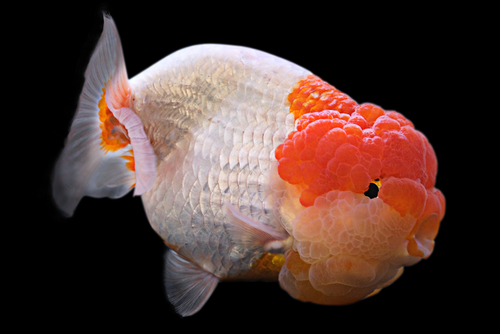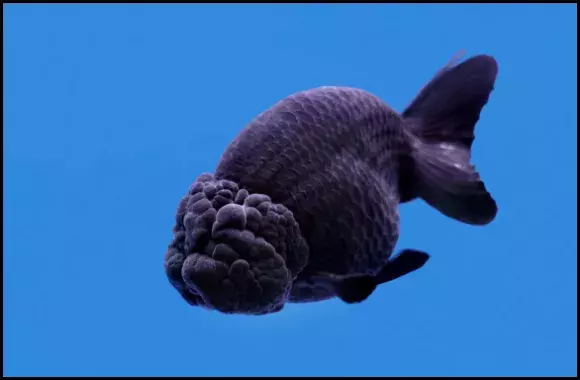Blog Categories
Exploring the Intricacies of Ranchu and Lionhead Goldfish
In the vast, captivating world of aquaculture, few species captivate the human eye like the Ranchu and Lionhead goldfish. The fascinating head structure of the head Ranchu is certainly their defining characteristic, capturing every aquarist's attention. Beautifully complementing their radiant gold hue, the head of the Ranchu goldfish is a sight to behold and has earned them a special place among aqua enthusiasts.
Compared to Ranchus, those entranced by the marine world often find lionheads equally intriguing. These lionhead goldfish charm hobbyists and enthusiasts alike with their distinctive head, similar to that of Ranchus, but with a shape and configuration that is all their own. That's right! No two lionheads are perfectly identical, and therein lies their unparalleled beauty. Like Ranchus, lionheads also demand specialized care and attention but to the avid aquarist, this duty becomes an adventure rather than a challenge.
Difference aside, when we talk about similarities, certain characteristics are shared by both Ranchu and Lionhead goldfish. The unique bulging heads of both Ranchus and lionheads can be traced back to their shared ancestry. For both goldfish breeds, the magnificent head is their standout feature. While a Ranchu's head protrudes somewhat, a Lionhead's comes off as much smoother and more rounded. Despite these slight differences, both species are stunning in their own right, and any aqua hobbyist would be proud to feature them in their collection.
It's important to remember, though, that the care and maintenance of your Ranchus and lionheads are key to ensuring that they shine in all their glory. Certain dietary requirements, along with a specific environment, can greatly enhance their appearance and longevity. Furthermore, the slight differences between Lionheads and Ranchus make their care even more intriguing.
Here at Connect Fish Friends, we understand the intricacies of Ranchu and Lionhead Goldfish, from their shared yet distinct characteristics to their specific care needs. We invite you to learn more about these captivating species and find out how rewarding it can be to care for them. As you delve deeper into the amazing world of Ranchus and Lionheads, we're confident you'll form a profound appreciation for these two glittering jewels of the aquarium world.
Peeling Back the Layers of the Lionshead's Mystique: Unearthing Key Facts about Ranchu Goldfish
When you peel back the layers of mystique shrouding the Lionhead's Ranchu variety, you begin to delve into a world that's as intricate as it's enchanting. They say there's more than meets the eye, and that is certainly true when it comes to understanding the Ranchu goldfish and its Lionhead relative. Often mistakenly considered identical, discovering the key facts about these captivating creatures can be an adventure for the uninitiated.
The Ranchu goldfish comes from the land of the rising sun, Japan, and has a history that stretches back hundreds of years. Its unique features, closely resembling a lion's mane, mask a body defined by contrast and diversity. Swimming lightly across the water, with its back curved, one can't help but appreciate the elegance of the Ranchu.
While the Ranchu shares several similarities with the Lionhead, the Lionhead Ranchu is a specific subset. Lionhead Ranchus are primarily known for their prominent head growths, earning them the 'Lionhead' moniker. These growths on their head give them a unique silhouette that adds to their charm.
However, when it comes to breeding and nurturing these goldfish, it's not just about the euphoria of beautiful appearances. Both the Ranchu and Lionhead deserve care and attention reflective of their needs. The Lionhead's and Ranchu's diets should be rich and varied, and their environment should mimic their natural habitats to preserve their health. Knowledgeable enthusiasts often create environments that allow Ranchus to thrive.
Moreover, to fully appreciate the more subtle distinctions between the Ranchu and Lionhead, it's necessary to study their behavior over time. The variety of Ranchus, for instance, has a slightly different swimming style. In contrast, the Lionhead's swimming pattern may reveal clues about its overall health condition.
The realm of Ranchus and Lionheads is vast, offering endless fascination with every back-and-forth in your aquarium. Yet, as Connect Fish Friends, it's essential to remember that the peculiarities and pleasures accompanying these goldfish varieties should also come with a healthy dose of respect. They're not just pets, they're companions providing an unparalleled visual feast, while quietly teaching lessons on the intricate web of life.

Critical Tank Assessment: Crafting the Ideal Environment for Ranchu and Lionhead Fish
Fish enthusiasts and those hoping to dive into the realm of goldfish rearing must keep in mind the importance of providing an adequate and suitable environment for their beautiful, aquatic friends. High on the list are the Lionhead and Ranchu goldfish, two fascinating species that require careful tank assessment for their well-being.
The Lionhead goldfish is popular among fish fanciers thanks to its distinctive appearance. The same goes for Ranchu goldfish, affectionately known as the "king of goldfish" by admirers. Their charm certainly adds to any tank, making it even more critical to ensure the tank environment is conducive to their growth and health. Do remember, happy fish equate to happy fish enthusiasts!
When it comes to defining a suitable tank for both Ranchu and Lionhead fish, certain factors need to be considered. The tank size plays a key role in determining the health of both goldfish breeds. A larger tank provides more swimming space, ensuring both species of fish have ample room to swim and thrive. Lionhead goldfish, with their shorter bodies, thrive better in shallow tanks. On the other hand, Ranchus, despite their striking similarity to Lionhead fish, require deeper tanks to accommodate their larger bodies.
Another critical element in the tank assessment process is the water quality. Both Lionhead and Ranchu goldfish need clean, well-filtered water to maintain good health. While some goldfish are known to tolerate less ideal conditions, both Ranchus and Lionheads are exceptionally sensitive, and thus require superior water quality to ensure optimum health.
Lionheads and Ranchus are friendly fish that typically get along quite well together due to their similar temperaments. However, to ensure cohabitation harmony within the tank, it's best to avoid housing them with faster swimming goldfish breed. The leisurely swimming habits of the Lionhead and Ranchu might lead to mealtime competition from speedier tank mates.
Connect Fish Friends assures you that with careful tank assessment and suitable accommodations, the joys of owning a Lionhead or a Ranchu can be a truly rewarding experience for any goldfish enthusiast. Indeed, observing these captivating fish in an environment that mirrors their natural habitat presents an unparalleled sense of satisfaction and accomplishment for all fish aficionados out there.
Hidden Aspects of Nutrition: Understanding the Distinctive Feeding Patterns of Ranchu and Lionhead Species
The lionhead and ranchu goldfish are fascinating species to observe and study. Their unique morphology and behavior set them apart as distinctive members of the goldfish family. Among the various intriguing aspects of these species, their feeding patterns stand out as especially noteworthy. This discussion sheds light on some hidden aspects of nutrition—specifically, understanding the distinctive feeding patterns of ranchu and lionhead species.
Goldfish food is typically provided in multiple forms to meet the dietary needs of different species, with lionheads and ranchus being no exception. Both the lionhead and the ranchu have an eccentric eating style which is well-suited to their compact, bulky bodies. They eat food that sinks rather than floats, which reduces the risk of air ingestion. However, the nuances associated with the diet of both lionheads and ranchus don't end here.
Starting with the lionhead, this goldfish variant requires a diet rich in proteins. Their metabolism works at a higher pace to support their massive bodies, necessitating a balanced diet for ensuring healthy growth. Additionally, as part of their eating habits, lionheads enjoy searching for food, thus benefitting from treats hidden in the tank's substrate.
Contrarily, ranchus possess a slightly slower metabolism, in comparison to lionheads. Herein, it is crucial to provide ranchus with food items that are easily digestible, with a mix of proteins, fibers, and carbohydrates. Ranchus also typically demonstrate a similar interest as lionheads, in scavenging their food from the tank's substrate.
Moreover, it is essential to not overfeed either the lionhead or the ranchu. While these fish may seem to have an endless appetite, overfeeding can lead to severe health problems. A balanced diet paired with regular feeding intervals is key in ensuring the well-being of both goldfish species.
On Connect Fish Friends, various goldfish species, including rare finds like lionheads and ranchus, are discovered and more understood. Deeper insights into their distinctive feeding patterns provide a more holistic perspective about these species. Crafting the ideal environment for these fish such as ranchu and lionhead, which goes beyond the technicalities of tank assessments, involves considering minute details like their nutrition sources too.
In conclusion, be it a vibrant lionhead or a graceful ranchu, understanding their unique feeding patterns is as essential as appreciating their physical beauty. This knowledge further enhances the experience of keeping and nurturing these marvels of the aquatic world.
How do I maintain their distinctive head growth (wen)?
The wen of Lionhead Ranchu Goldfish can continue to grow as they age. Ensure good water quality, as poor water conditions can lead to infections in the wen. Gentle handling during maintenance can also help keep it in good condition.
What do Lionhead Ranchu Goldfish eat, and how often should I feed them?
Lionhead Ranchu Goldfish are omnivores and enjoy a balanced diet. Offer them high-quality goldfish pellets or flakes, as well as occasional treats like live or frozen foods. Feed them once or twice a day, only what they can consume in a few minutes to avoid overfeeding.
How big do Lionhead Ranchu Goldfish typically grow?
Lionhead Ranchu Goldfish generally reach a size of about 6 to 8 inches (15 to 20 centimeters) in a well-maintained aquarium. In spacious and well-cared-for environments, they can grow even larger.
What are Lionhead Ranchu Goldfish, and what makes them unique?
Lionhead Ranchu Goldfish are a variety of fancy goldfish known for their distinctive appearance. They have a short, round body and a hood-like headgrowth called a "wen," which resembles a lion's mane, giving them their name.
Can Lionhead Ranchu Goldfish change their color as they grow?
Yes, it's possible for their coloration to change as they mature. Some Lionhead Ranchu Goldfish may develop more vibrant colors or changes in their pattern over time.
Are there specific grooming or health needs for Lionhead Ranchu Goldfish?
Regularly check your fish for signs of illness, such as changes in behavior, loss of appetite, or issues with their wen. Maintaining good water quality and providing a balanced diet are crucial for their well-being.
What is the purpose of the wen in Lionhead Ranchu Goldfish, and how can I ensure it remains healthy and well-maintained in my fish?
Protection: The wen acts as a protective layer, guarding the head and eyes of the fish from potential injuries and abrasions, especially in environments with sharp objects or tank decor.
Buoyancy: The headgrowth aids in buoyancy control. It can help Lionhead Ranchu Goldfish maintain a stable position in the water, preventing them from floating to the surface or sinking too quickly.
Attractiveness: The wen is a prominent and distinctive feature of these goldfish, making them highly sought after by aquarists for their unique and charming appearance.


